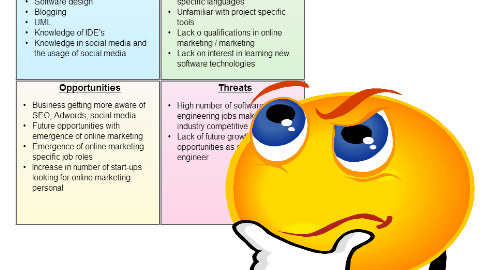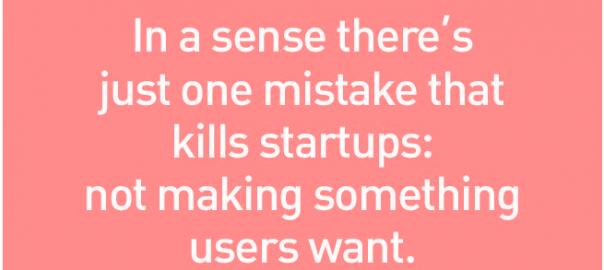For every $1 spent on email marketing, you will get $44.25 in revenue (source).
That’s why marketers tell you that the money is in the email list!
Think about that…. If you spend $1,000 on email marketing, you should get $44,250 in revenue! That’s an insane return on investment!
And just think what you could do for your readers (and yourself) with $44,250…
Or 10X that. Or 100X that.
And the good news is that a bigger list = more revenue.
So if you don’t have a list, you have to start one today. You can create an email list with MailChimp for free so there’s literally no excuse….
Once you have a list you need to grow it by adding subscribers. How do you do that? The best way is using signup forms on your website.
Signup Forms
Signup forms ask the reader a few questions and, with the click of a button, add them to your email list.
Since their introduction, they have evolved from the basic sidebar form into a variety of forms designed to capture your reader’s attention.
There are nine types of signup forms that you can use to grow your list.
I’m going to talk about five of my favorites and how to use them.
Welcome Mat
A Welcome Mat is an active signup form that lets you see the page for a few moments after it first loads. Then the form drops in from the top of the page and covers it entirely.
The Welcome Mat is part of the SumoMe toolkit, which is free to try.
Welcome Mats can deliver huge list growth – ClickMinded.com tripled their email signups with just one of them!
However, this type of signup form is pretty in your face so use it sparingly.
My advice would be:
Only use one Welcome Mat per site.
One of the best places to use them is your blog homepage.
So a reader finds a link to one of your blog posts in Google and opens the page. When they’re done reading your awesome post, they decide to check out what else you have to offer so they click on your “Blog” menu link.
The blog homepage loads and boom! There’s the Welcome Mat just waiting to give them some email list awesomeness.
Feature Box
A Feature Box is a large signup form that sits at the top of a page.
But unlike the Welcome Mat, it’s passive so it doesn’t interrupt the reader.
Derek Halpern from Social Triggers has increased email sign up rates by 51.7%.
That’s extremely impressive for a signup method that doesn’t interrupt the reader.
Now while they don’t interrupt the reader, Feature Boxes are big. This means that they stick out to the user and can quickly get annoying if overused.
So my recommendation is:
Only use one Feature Box per page and probably don’t use more than one per site.
My other recommendation is to never use Feature Boxes and Welcome Mats together on the same page.
If you’re using WordPress, Plugmatter has a great plugin that can help you build a feature box in an hour or so. The free option puts a feature box on every page. So if you don’t want that, I’d spring for the paid version, which starts at $37.
Content Upgrade
Content upgrades are a hot new way of exploding your email list growth.
Backlinko.com got a massive 785% increase in conversions using content upgrades.
Eric Siu, from GrowthEverywhere.com, saw an impressive 492% increase in email list signups.
So what do they do?
A content upgrade is bonus content about the blog post that the reader receives after signing up for your email list.
There are a lot of different types of content upgrades to choose from. (If you get stuck on where to start, ebooks are always popular.)
I created mine using a plugin from ContentUpgrades.io. It puts a form on your blog post that signs the reader up for your email list.
After completing the form, your reader gets an email with a link a PDF that has the bonus content in it.
Like I said, content upgrades are converting really well.
Content upgrades work for the same reason that fans at a concert demand an encore.
If you love the band, you want to hear the encore. You don’t care that your feet hurt from standing for three hours or that your ears are ringing from the insanely loud PA system. You just want to hear more.
And if your readers love your post, they don’t mind signing up for your email list if it means they get to read something else you wrote on the same topic.
Popup
A popup is a signup form that launches over the top of the page.
To get back to the page, the reader has to either enter their email address or close the popup.
You can trigger them to launch a certain amount of time – say 3 seconds after the page has loaded. Or, when the reader has scrolled down the page – for example when the reader has scrolled 50% of the way down the page.
Now if you ever mention popups to a web designer, they will roll their eyes and tell how terrible they are. And tell you how readers hate popups. And how there must be a better way.
Is any of that true?
Well, readers do get annoyed and leave if you bombard them with popups.
How do you solve that? Don’t show the reader too many of them! Yes, it’s that easy.
Almost every reputable popup plugin can let you limit how often a reader sees your popup.
The ListBuilder popup from SumoMe lets me limit the reader seeing the popup for years.
You should use this feature to make sure that you aren’t plastering your readers with popups when they visit your site.
And there’s something about popups that web designers don’t want to admit…
Popups convert really well. Like crazy well.
Nikki McGonigal tested how well popups work on her food craft blog.
The popup got 1,375% more subscribers compared to a sidebar signup form.
No, that isn’t a misprint or a miscalculation.
One thousand, three hundred and seventy five percent more subscribers… wow!
That’s why so many sites use them.
Just don’t overuse them and you could be seeing crazy conversion rates too 🙂
Exit Intent Popup
An exit intent popup is an active signup form, which takes over the screen like a popup.
But, it’s only shown when the user is about to close the tab or go to another page.
As with normal popups, some people don’t like exit intent popups because they can seem needy.
They say that exit intent popups are like that crazy ex who you calls you at 3am, a week after you broke up, begging you to take them back.
Now I don’t know if I’d go that far…. but I can understand the sentiment.
So why am I showing them to you then?
Because they can convert really well.
YourMechanic.com tested an exit intent popup for three months and their conversion rate was 7.16%.
If you don’t know, that’s huge!
And if you get creative, you can get even better results…
Gr8Fires.co.uk built a stove estimate calculator into their exit intent popup and got a massive 300% increase in sales leads.
So just because some people don’t like them, doesn’t mean that they don’t work.
If you decide to test using an exit intent popup, the ListBuilder popup turns into an exit intent popup when you use it in Smart mode.
How Many Signup Forms Should You Use?
Here’s the deal:
To supercharge your list growth, you have to use more than one type of signup form.
Why? Because more opportunities to sign up = more people signing up.
But… It’s important that you don’t overload your pages with signup forms.
Because too many forms make you seem desperate. Like that used car salesman who will say anything to make the sale and just won’t stop talking.
So what’s the right number of forms?
Well the key is to use the right mix of active and passive forms.
Active forms are the ones that the reader has to do something with before they can read the rest of the post. So, they either have to sign up for your email list or tell the form to go away.
The infographic below shows which forms are active or passive.
So what’s the right mix? My rules of thumb are:
- No more than one active form per post.
- No more than two passive forms per post.
If you’re still unsure if you used too many forms, ask yourself this:
How you would feel using a site with this many forms?
If the answer isn’t “I’d feel OK” then you should think about removing some of the forms.
Want 4 more ways to grow your email list?
There are nine types of signup forms that you can use to grow your list. These were 5 of my favorites.
If you’d like to learn about four more types of signup forms and how to use them, you can click below to get my free ebook.
You’ll also get another bonus – the same 19 point checklist that I use to plan the signup forms for my site.
Download the tutorial now.
About the author:














